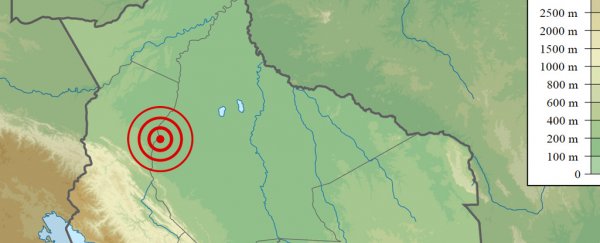Classic sci-fi writer Jules Verne once imagined a whole subterranean landscape deep inside the planet, complete with lost prehistoric species and plant life. The book was aptly titled Journey to the Centre of the Earth.
We might not actually find dinosaurs down there, but new research is revealing features in the underworld resembling structures on the surface. Far from a bubbling hot mess, there are mountains deep below rivalling anything up here.
Geophysicists from Princeton University in the US and the Chinese Academy of Sciences used the echoes of a massive earthquake that struck Bolivia two decades ago to piece together the topography deep beneath the surface.
On 9 June 1994, an 8.2 magnitude tremor rocked a sparsely populated region of the Amazon in the South American nation. Nothing this powerful had been seen in decades, with shocks being felt as far away as Canada.
"Earthquakes this big don't come along very often," says geoscientist Jessica Irving.
Not only was it big, it was deep, with a focal point estimated at a depth of just under 650 kilometres (about 400 miles). Unlike quakes that grind through the crust, the energy from these monsters can shake the whole mantle like a bowl of jelly.
The tremor happened to be one of the first to be measured on a modern seismic network, providing researchers with unprecedented recordings of waves bouncing through our planet's interior.
Just like the soundwaves from an ultrasound can reveal differences in the density of tissue inside a body, the huge waves pulsing through Earth's molten guts as its crust shudders and grinds against itself can be used to put together an image of what's down there.
Only recently geoscientists used signatures in these waves to determine the rigidity of the planet's core.
In this instance, the researchers took advantage of the 1994 quake's intensity to detect waves scattering as they transitioned between layers, revealing details of the boundaries.
"We know that almost all objects have surface roughness and therefore scatter light. That's why we can see these objects – the scattering waves carry the information about the surface's roughness," says lead author Wenbo Wu, a geoscientist at the California Institute of Technology.
"In this study, we investigated scattered seismic waves travelling inside the Earth to constrain the roughness of the Earth's 660 kilometre boundary."
At this depth there's a division between the more rigid lower parts of the mantle and an upper zone that isn't under quite as much pressure, one that creates a discontinuity marked by the appearance of various minerals.
The deepest hole we've ever dug is a paltry 12 kilometres (7.5 miles) deep, so without a Jules Verne scale tunnel to drop us down there, we've had no idea what this transition zone looks like. Until now.
Based on those all-important waves coursing through the boundary, the researchers have concluded the meeting point between the mantle's upper and lower parts is a zig-zagging mountain range that puts anything on the surface to shame.
"In other words, stronger topography than the Rocky Mountains or the Appalachians is present at the 660 kilometre boundary," says Wu.
This jagged line has significant implications for Earth's formation. Most of our planet's mass consists of mantle, so knowing how it mixes and changes by transferring heat informs us of how it evolves over time.
Different takes on the evidence have produced competing models on how minerals flow and churn within the pressurised rock, some saying it's well-mixed, others suggesting there's interference at the border.
Knowing the details of this subterranean mountain could decide the fate of various models describing the history of our planet's ever-changing geology.
"What's exciting about these results is that they give us new information to understand the fate of ancient tectonic plates which have descended into the mantle, and where ancient mantle material might still reside," says Irving.
It might not be an easy place to explore. And forget the mastodons and giant insects. But the lost world under our feet still holds clues about our past if we know where to look.
This research was published in Science.
